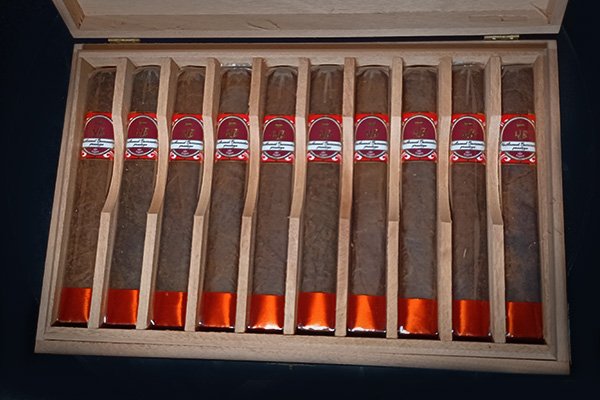Less common than their traditional counterparts, box-pressed cigars are nonetheless highly prized by some aficionados. Here we tell you where they come from and how they are formed. Four-sided cigars may not be as well known as cylindrical ones, but they are a favorite of many enthusiasts.
According to proponents, the square shape of box-pressed cigars beautifully enhances and intensifies the flavors of the tobacco. The packaging process involves a gentle application of pressure that condenses the tobacco leaves, resulting in a cigar with a better draw and a cooler, more consistent burn. Some cigar lovers also find this silhouette more comfortable on their fingers and mouth.
Not everyone agrees on the origins of box-pressed cigars. Despite this, Cuba is central to the stories, as it is with so many things related to cigars. According to Tad Gage, author of The Complete Idiot's Guide to Cigars, the practice dates back to the early 20th century. Around this time, cigar manufacturers began packing their products very tightly: putting more cigars in each box meant saving on shipping costs. Of necessity, freshly rolled cigars, being slightly moist and pliable, took on a new shape when tightly packaged.
Other theories maintain that this packaging technique was born to prevent the cigars from rolling around in their boxes during the trip, since at that time they were shipped by ship. Once out of the box, the cigars had a more square shape, which would have appealed to some connoisseurs. Therefore, manufacturers would have started creating this type of cigars on purpose. In his book The Ultimate Cigar Book, Richard Carleton Hacker states that the square shape was created simply to prevent the cigar from rolling off the table between two puffs.
Manufacturing process
Regardless of their origin, box-pressed cigars are obtained by tightly packing freshly rolled cigars in their box. They should be tight enough to form the square shape, but without damaging the delicate tobacco leaves that wrap around the outside of the cigar. The boxes are then stacked on top of each other and placed in a manually controlled press, applying just enough pressure to seal them tightly.For the diehards, "box pressed" clearly refers to round cigars packed tightly in their final box to achieve the square shape. As the name suggests, the pressing is done inside the cigar box. However, some also use this term to describe any square cigar, including those shaped before packaging (i.e., pressing outside the cigar box). One of the most famous methods of squaring is called "trunk pressing." This process uses a wooden press where the cigars rest for up to 12 hours to take the perfect shape. After this time, the cigars are turned 180 degrees and placed under pressure again for the same amount of time. Since log pressing involves more work, it tends to be more expensive for the consumer, but you can't put a price on perfection, right?












